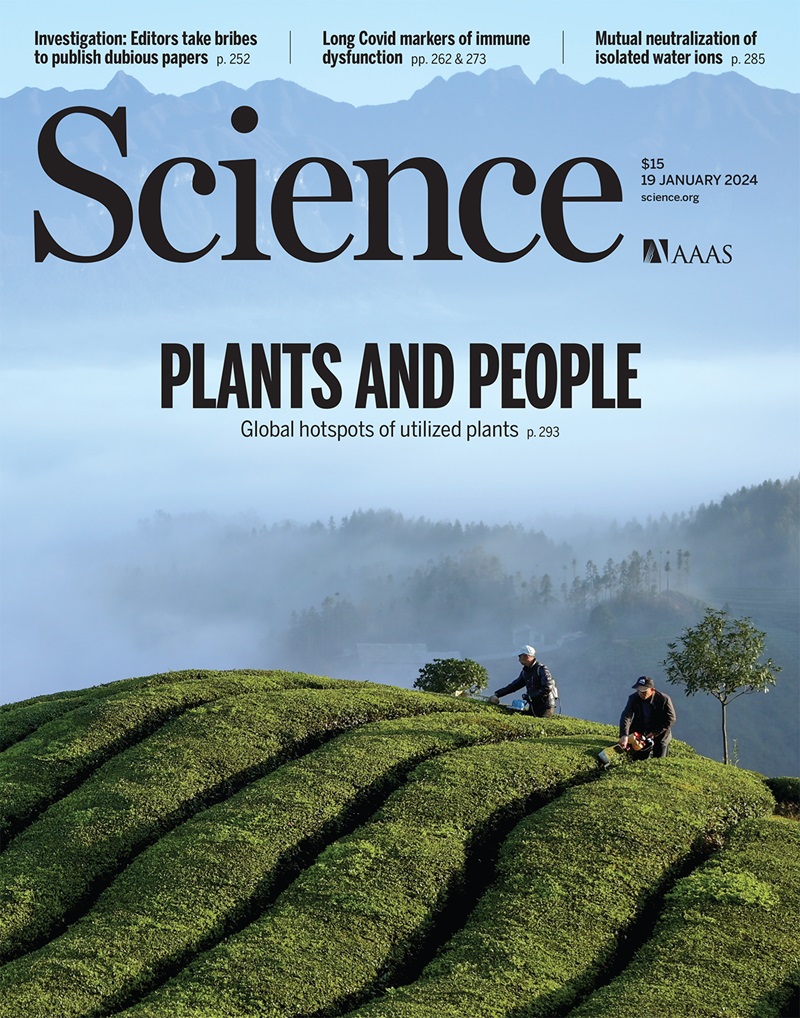Harnessing carbene polarity: Unified catalytic access to donor, neutral, and acceptor carbenes
IF 45.8
1区 综合性期刊
Q1 MULTIDISCIPLINARY SCIENCES
引用次数: 0
Abstract
Metal carbenes are highly useful intermediates in organic synthesis. However, not all classes of carbene polarity are catalytically accessible, nor are there common precursors known to synthesize all of these electronically diverse carbene types. Here, we report a unified strategy to access a full range of carbenes, including those with donor substituents (EDG: OMe, NR2, alkyl), acceptor substituents (EWG: CN, CO2R), and electronically neutral or nonpolar substituents (H, BR2, SiR3, halide, aryl, heteroaryl). This Fe-catalyzed method harnesses α-Cl radicals and couples an exceptionally wide array of carbenes in (2+1) cyclopropanations and σ-bond insertions. This mild, robust, and electronically tunable synthetic method facilitated the development of a better classification system for catalytic metal carbenes (validated by both kinetic and thermodynamic quantification), as well as a carbene “click-like” reaction and aqueous adaptation for chemical biology applications.
利用碳烯极性:对供体、中性和受体碳烯的统一催化途径
金属碳烯是有机合成中非常有用的中间体。然而,并不是所有种类的碳烯极性都可以催化获得,也没有已知的共同前体来合成所有这些电子多样化的碳烯类型。在这里,我们报告了一个统一的策略来获取全范围的碳,包括那些具有供体取代基(EDG: OMe, NR 2,烷基),受体取代基(EWG: CN, CO 2 R)和电子中性或非极性取代基(H, BR 2, SiR 3,卤化物,芳基,杂芳基)的碳。这种铁催化的方法利用α-Cl自由基,在(2+1)环丙烷和σ-键插入中偶联了大量的碳烯。这种温和、稳健、电子可调的合成方法促进了催化金属卡宾的分类系统的发展(通过动力学和热力学量化验证),以及卡宾“点击式”反应和化学生物学应用的水适应。
本文章由计算机程序翻译,如有差异,请以英文原文为准。
求助全文
约1分钟内获得全文
求助全文
来源期刊

Science
综合性期刊-综合性期刊
CiteScore
61.10
自引率
0.90%
发文量
0
审稿时长
2.1 months
期刊介绍:
Science is a leading outlet for scientific news, commentary, and cutting-edge research. Through its print and online incarnations, Science reaches an estimated worldwide readership of more than one million. Science’s authorship is global too, and its articles consistently rank among the world's most cited research.
Science serves as a forum for discussion of important issues related to the advancement of science by publishing material on which a consensus has been reached as well as including the presentation of minority or conflicting points of view. Accordingly, all articles published in Science—including editorials, news and comment, and book reviews—are signed and reflect the individual views of the authors and not official points of view adopted by AAAS or the institutions with which the authors are affiliated.
Science seeks to publish those papers that are most influential in their fields or across fields and that will significantly advance scientific understanding. Selected papers should present novel and broadly important data, syntheses, or concepts. They should merit recognition by the wider scientific community and general public provided by publication in Science, beyond that provided by specialty journals. Science welcomes submissions from all fields of science and from any source. The editors are committed to the prompt evaluation and publication of submitted papers while upholding high standards that support reproducibility of published research. Science is published weekly; selected papers are published online ahead of print.
 求助内容:
求助内容: 应助结果提醒方式:
应助结果提醒方式:


